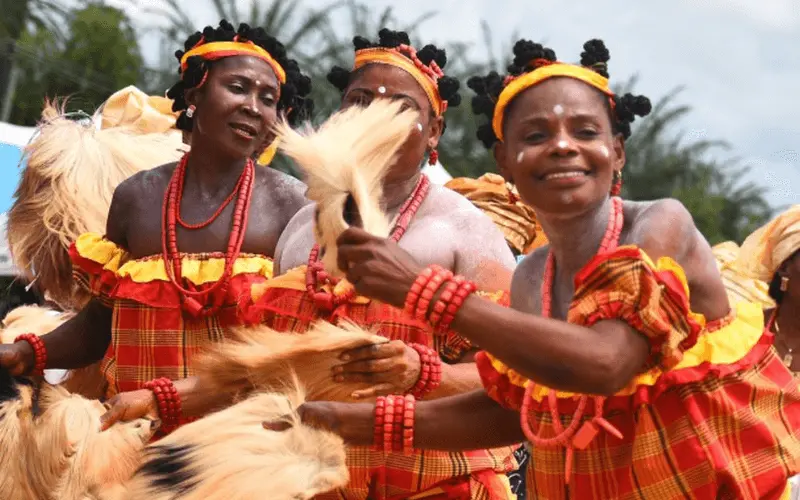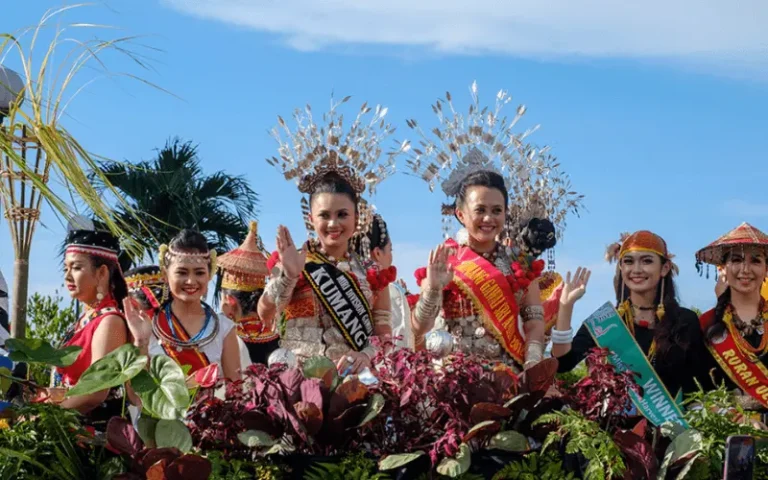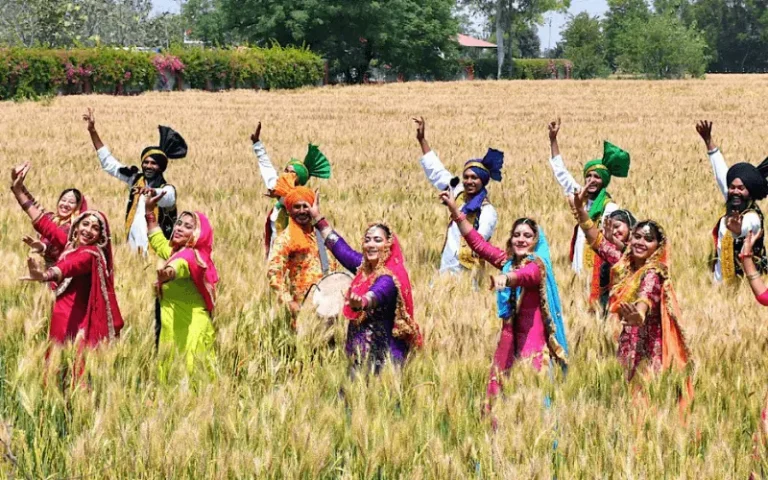New Yam Festival
The New Yam Festival, also known as the Igbo Yam Festival or Feast of the New Yam in Igbo tradition, holds a special place in various cultures across the globe. It commemorates the yam harvest, symbolizing abundance, fertility, and thanksgiving. The festival marks the beginning of a new agricultural cycle, celebrated with vibrant rituals and joyful gatherings.
In Igbo communities, the festival isn’t merely about the yams; it embodies deep-rooted cultural significance. It’s a time for communities to come together, offering prayers, feasting, and showcasing colorful traditional attire. The New Yam Festival isn’t just a celebration of harvest, it’s a cherished tradition that reflects unity, gratitude, and the rich cultural heritage of the Igbo people.
Stay tuned to know all about this festival.
History of the New Yam Festival
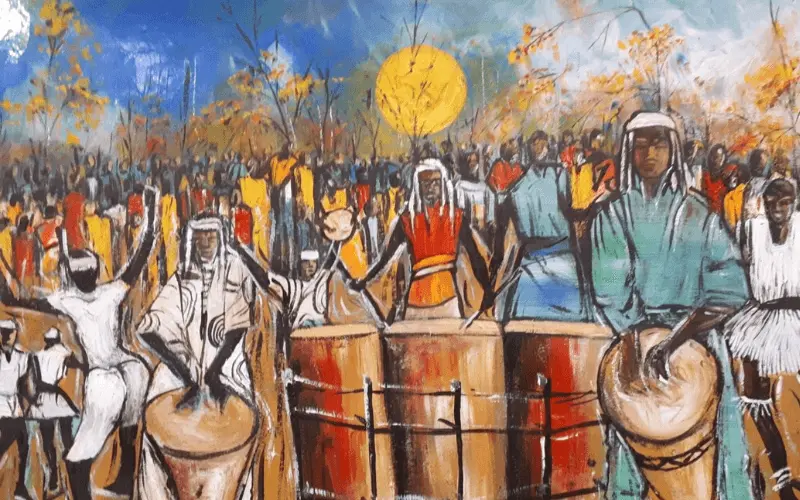
The Yam in Nigeria isn’t just a crop; it symbolizes wealth and honor. The New Yam Festival among the Igbo people is a deeply rooted tradition that dates back to ancient times when yams were a sign of prosperity and social status.
This festival isn’t a simple yearly event; it marks the beginning of a new farming season. Consuming new yams before the celebration is considered taboo, a way of thanking the gods for the harvest and seeking their blessings for the next one.
In Benin’s history, ceremonies around the yam harvest showcased the king’s connection to agricultural abundance. Rituals and exchanges emphasized the anticipation of a plentiful harvest.
Over time, from ancient customs to modern celebrations like the Tabor City Yam Festival and the North Carolina Yam Festival, the Feast of the New Yam has evolved. It retains its core values while embracing new traditions and celebrating cultural heritage and unity.
Origin and Stories of Yam Festival
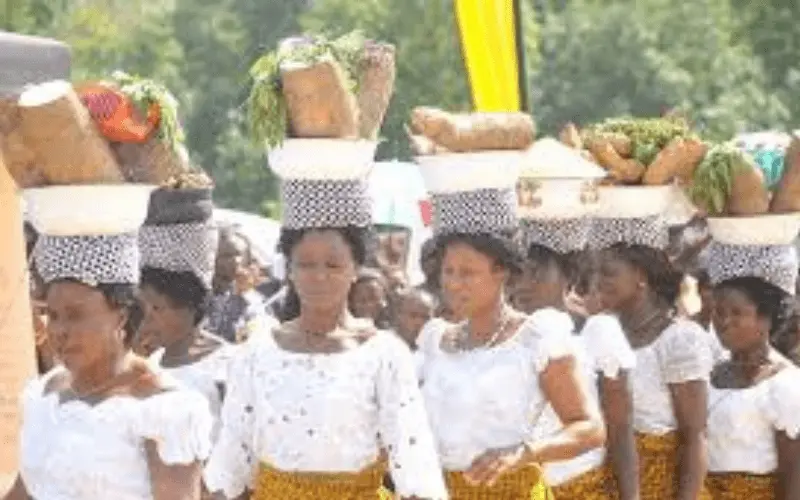
Once upon a time in Igbo land, there were tales about the origin of yams and the cherished New Yam Festival. One story spoke of yams being tied to a brave sacrifice a mother’s sacrifice of her son. Legend had it that when an Afikpo woman offered her son to the oracle, Ibu Ukpabi, a miracle happened. From this sacrifice emerged a special yam, an Amadi Ji, deemed fit for the people. This yam was seen as a gift from the gods, nourishing the starving community. It was a tale passed down through generations, echoing similar stories found in other civilizations, like the Romans’ belief about wheat and the goddess Ceres.
Another intriguing story revolved around the cautious arrival of yams into their communities. When yams were introduced as a new food, fears arose about its safety. To test its edibility, a unique sequence unfolded: domestic animals, slaves, and bonded men were the brave ones to taste it first, in that order. Only after confirming its safety did the community leaders allow everyone else to partake. Some versions even described a fixed order, starting with the youngest from the most junior lineages, ensuring everyone’s well-being before enjoying this newfound food.
These tales painted the early days of yams and the New Yam Festival, weaving stories of sacrifice, caution, and communal well-being, shaping the traditions that became a vital part of Igbo culture.
When new yam festival is celebrated?
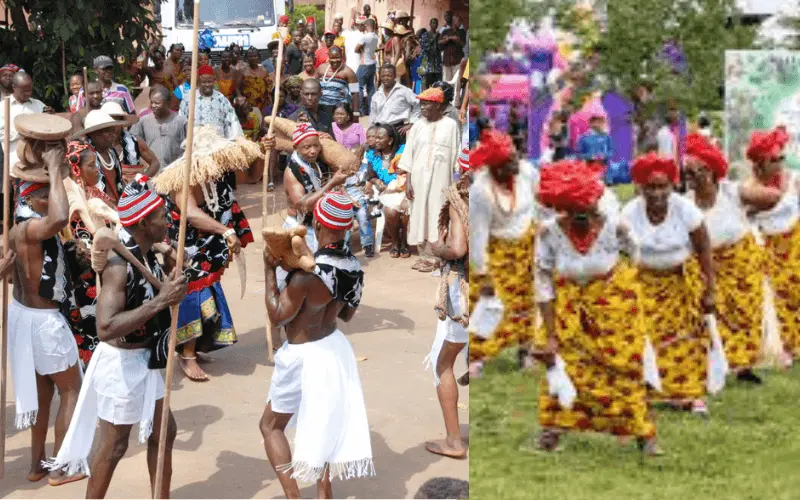
The New Yam Festival is celebrated between August and October, marking the harvest season for yams in many cultures. It typically occurs during this period to honor the arrival of the new yam crop.
Now let’s see how this festival is celebrated.
How New Yam Festival Celebrated?
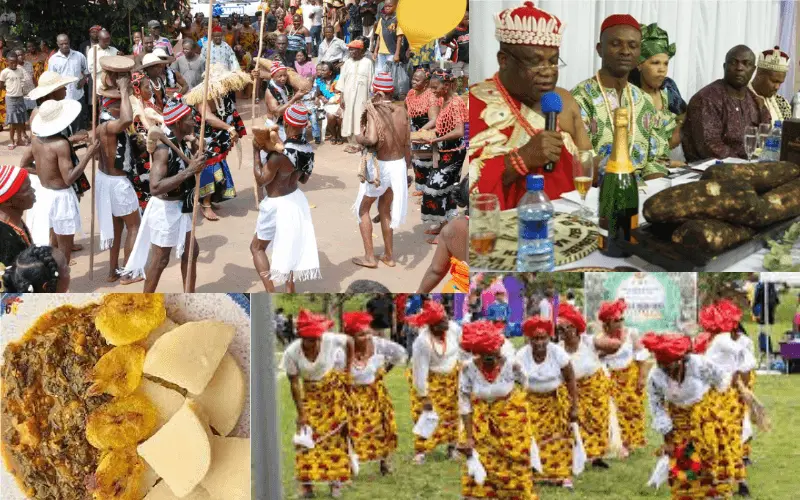
Yam Festival is celebrated through dances, rituals, feasts, and cultural ceremonies, the festival honors the harvest and cultural heritage.
Who celebrates the New Yam Festival?
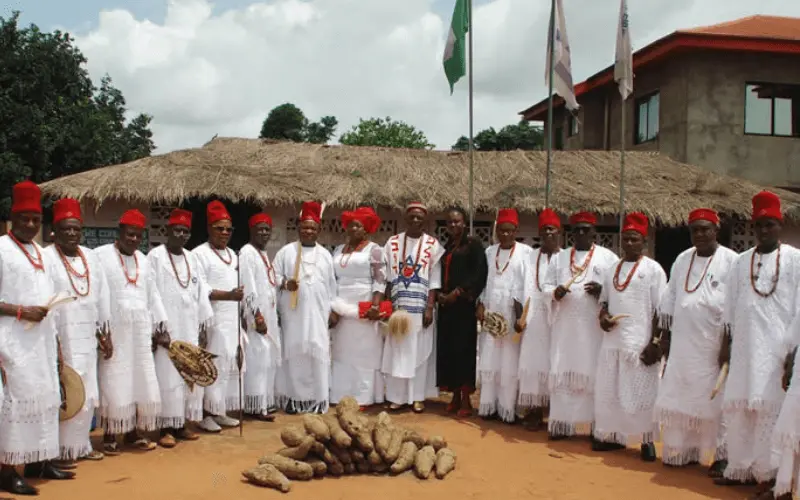
The New Yam Festival is predominantly celebrated by the Igbo people, also known as the Ibos, originating from the southeastern part of Nigeria. This cultural group holds the festival in high esteem, considering the yam as a symbol of wealth and societal significance, making the festival a pivotal event in their social and cultural calendar.
Beyond Nigeria, variations of the New Yam Festival are celebrated in other West African countries such as Ghana and Cameroon, where yam holds cultural significance. Additionally, countries in the Caribbean, including Trinidad and Tobago, and parts of South America like Suriname, also have festivals akin to the New Yam Festival, emphasizing the importance of yams in their cultural practices. These celebrations highlight the diverse ways yams are revered and honored across different cultures and regions.
Cultural Variations in New Yam Festival
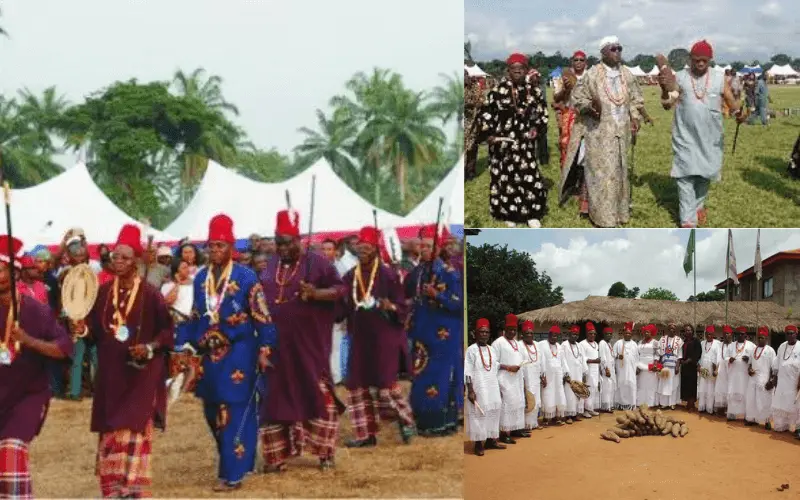
The New Yam Festival showcases rich cultural variations across different communities. In Nigeria, various ethnic groups like the Igbo, Yoruba, and Tiv celebrate the festival with unique customs and practices. The Igbo people, for instance, embrace it as a symbol of wealth and societal importance, with vibrant dances, rituals, and feasting marking the occasion.
In other West African countries like Ghana and Cameroon, similar festivities underscore the significance of yams within their cultures. These celebrations often involve communal gatherings, traditional dances, and rituals paying homage to the harvest and the vital role yams play in their heritage.
Moreover, countries in the Caribbean such as Trinidad and Tobago, and parts of South America like Suriname, have their versions of yam-centered festivals. These events mirror the reverence for yams, showcasing a fusion of indigenous practices and cultural influences, often accompanied by lively music, parades, and culinary delights.
The New Yam Festival, while celebrated under different names and customs, unites communities in honoring the harvest, demonstrating the diverse ways in which yams are venerated and celebrated worldwide.
Read other Harvest Festival Guides by Days Discuss
Mid-Autumn Festival (Moon Festival)
Holi Festival 2024| All you need to know
Sukkot 101| Quick Guide to Celebrating this Joyous Festival
Songkran 2024 (Thailand’s New Year Water Fight Festival)
Chuseok 2024| Korean Thanksgiving and Harvest Festival Quick Guide to Celebrate
Thanksgiving Day: History, Global Celebrations, and 6 Amazing Games for Festive Fun
Pongal Festival (All You Need To Know)
Erntedankfest 2024| Thanksgiving in Germany
Mabon(Autumn Equinox)| All You Need To Know About Pagan Thanksgiving
Gawai Dayak (Malaysian Thanksgiving Festival)
Onam Festival|All You Need to Know About The Biggest Festival in Kerala
Lughnasadh 2024| Celebrating the Celtic Harvest Tradition Quick Guide
Vaisakhi or Baisakhi| Harvest Festival of India| All You Need To Know About Largest Sikh Celebration
Conclusion
The New Yam Festival, an emblem of cultural heritage, unites communities through the celebration of yams, symbolizing abundance and cultural significance. This festival not only honors the harvest but also serves as a testament to the rich diversity and traditions cherished across various cultures worldwide.
Frequently Asked Questions
What does the yam festival celebrate?
The Yam Festival celebrates life, the community’s achievements, cultural heritage, and overall well-being. It commemorates the harvest and signifies the importance of yams in sustaining life while honoring cultural values and contributions within the community.
Where is the New Yam Festival?
The New Yam Festival is primarily celebrated in Nigeria, especially among the Igbo people in the southeastern region. It’s also observed in various parts of West Africa, including countries like Ghana and Cameroon, where yam holds cultural significance, reflecting diverse celebrations honoring the harvest and cultural traditions.
What is the sacred festival of the yam?
The sacred festival of the yam for the Ashanti people is the Ashanti Yam Festival. It’s an annual celebration deeply rooted in the traditions of the Ashanti community in Ghana, dedicated to honoring and celebrating the significance of yams within their culture.
How long is the yam festival?
The Yam Festival can span several days, encompassing various rituals, ceremonies, and festivities within the community’s cultural calendar.
Did the Igbo Village Worship Yams?
Yes, yams held significant cultural and spiritual importance in Igbo villages. They were revered and considered more than just a staple crop, often symbolizing wealth, fertility, and prosperity. Igbo communities conducted rituals and ceremonies during the New Yam Festival to honor and express gratitude to the gods for a bountiful harvest, showcasing the reverence and worship associated with yams in their culture.
Is the New Yam Festival Real?
Yes, the New Yam Festival is a real and culturally significant celebration observed primarily by the Igbo people in Nigeria and other West African communities. It’s a traditional event marking the harvest of new yams, featuring rituals, feasting, dances, and ceremonies that hold deep cultural and spiritual meaning within these societies.

